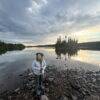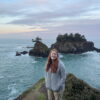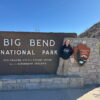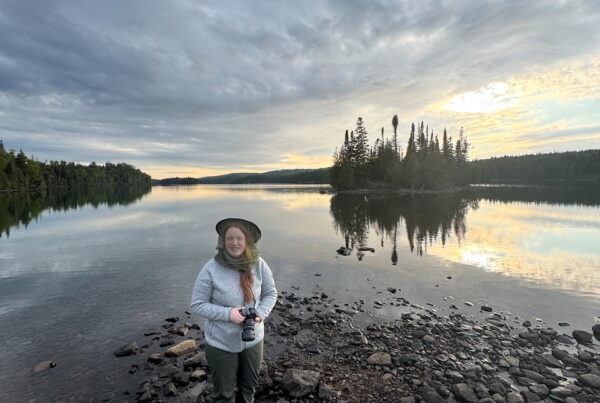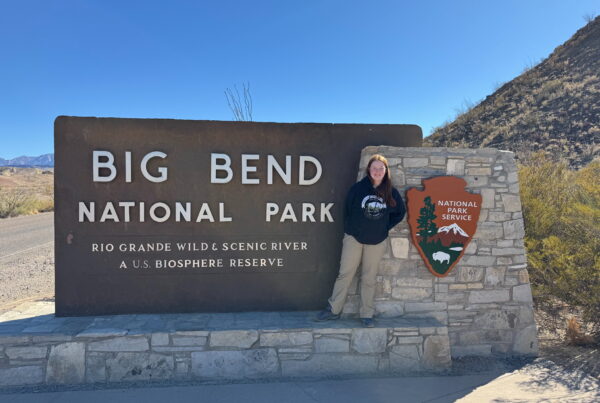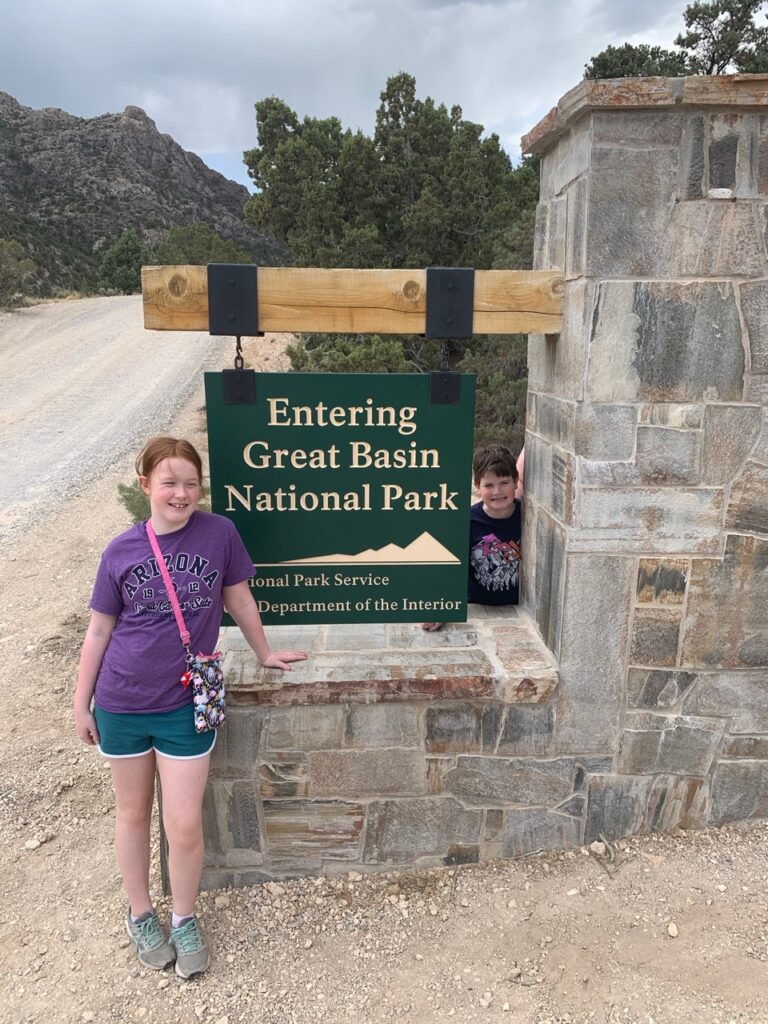
After leaving Capitol Reef, we embarked on the lengthy five-hour drive to Great Basin National Park, situated in northeastern Nevada, close to the Utah border. Great Basin was designated as a national park in 1986, though portions of it had been protected as a national monument as far back as 1922.
Nestled about 290 miles north of Las Vegas, the park lies in the heart of the Basin and Range Province—a dry, mountainous region flanked by the Sierra Nevada and the Wasatch Mountains. It encompasses roughly 77,000 acres and, together with the adjacent Highland Ridge Wilderness, forms a vast protected area of 227 square miles. Among its many attractions are the ancient Bristlecone Pines, recognized as some of the oldest living organisms on earth, the Lehman Caves, Wheeler Peak which rises to 13,063 feet, and a hidden glacier.
Regrettably, during our visit, the Lehman Caves were inaccessible. Also, my 11-year-old daughter was not keen on the challenging 8-mile hike up Wheeler Peak, which features an elevation gain of over 3,000 feet. Nonetheless, we managed to explore nearly every other corner of the park.

The closest settlement is Baker, NV—a tiny, census-designated place in southeastern White Pine County with a modest population of 68. Services here are scarce; there’s an unmanned 24/7 gas station and just one restaurant.
We opted to stay at the Hidden Canyon Retreat, a quaint hotel and operational ranch hidden within 375 acres of juniper, pinyon, sage, and pasture land. Accessing it requires a 6-mile drive along a dirt road that snakes through flatlands before descending into a canyon. The hotel is a haven for wildlife, including mule deer, turkeys, and golden eagles. The rooms offer tranquility and comfort, complete with a swimming pool, hot tub, and a variety of outdoor activities. At night, the absence of artificial lighting preserves the spectacular view of the night sky.
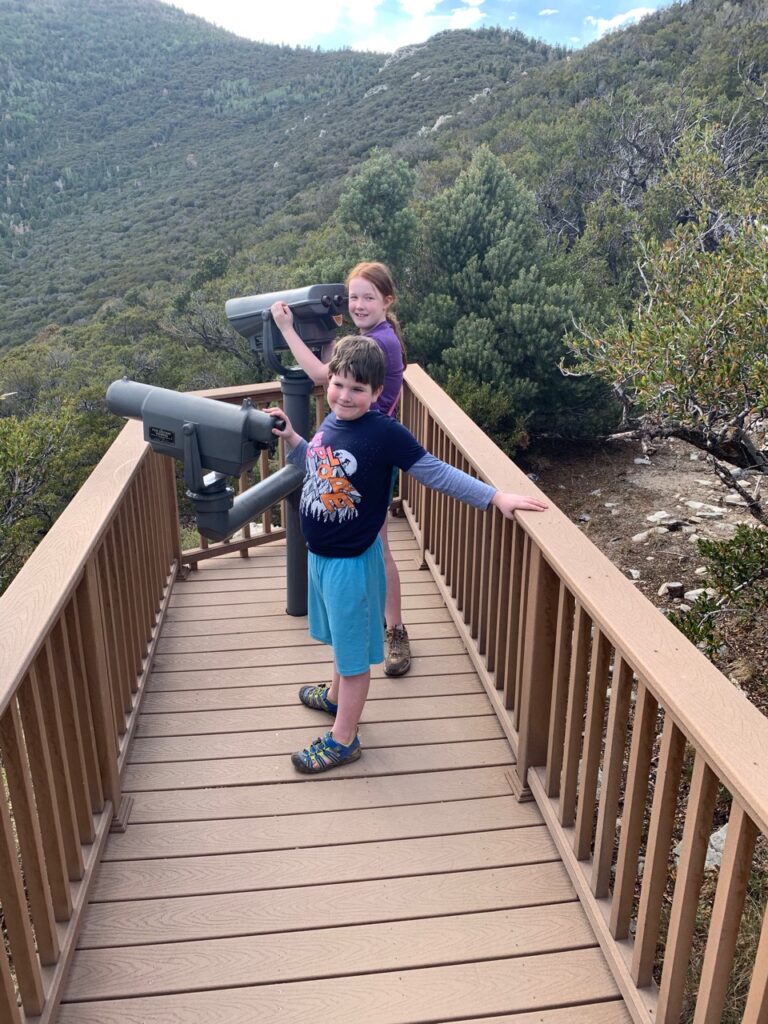
Our first stop was the main Visitor Center, located just outside the park in Baker. Here, we spoke with rangers, and the kids picked out pins, patches, and other souvenirs. A second visitor center near the caves was closed, but we enjoyed a meal at the nearby restaurant, which, interestingly, is operated by the same family that runs the Hidden Canyon Retreat.
The park’s main paved route is the Wheeler Peak Scenic Drive, leading to numerous viewpoints and trailheads. We also ventured along some of the park’s dirt roads, such as Snake Creek Road, which are mostly used for access to campgrounds and longer trails.
The Scenic Drive itself is an exhilarating mountain road that follows the Snake River, ascending nearly 4,000 feet in elevation to reach heights above 10,000 feet. The landscape at the summit is reminiscent of the Rocky Mountains and alpine forests, contrasting sharply with the Nevada desert below.
One of the highlights for watching and photographing the sunset was Mather Overlook. From this elevated spot, we enjoyed breathtaking views of Wheeler Peak, Bald Mountain, Buck Mountain, and Jeff Davis Peak. Below, the Snake River and fields of aspen trees could be seen. The area, complete with extended decks and mounted binoculars, provided a perfect spot for the kids to explore.
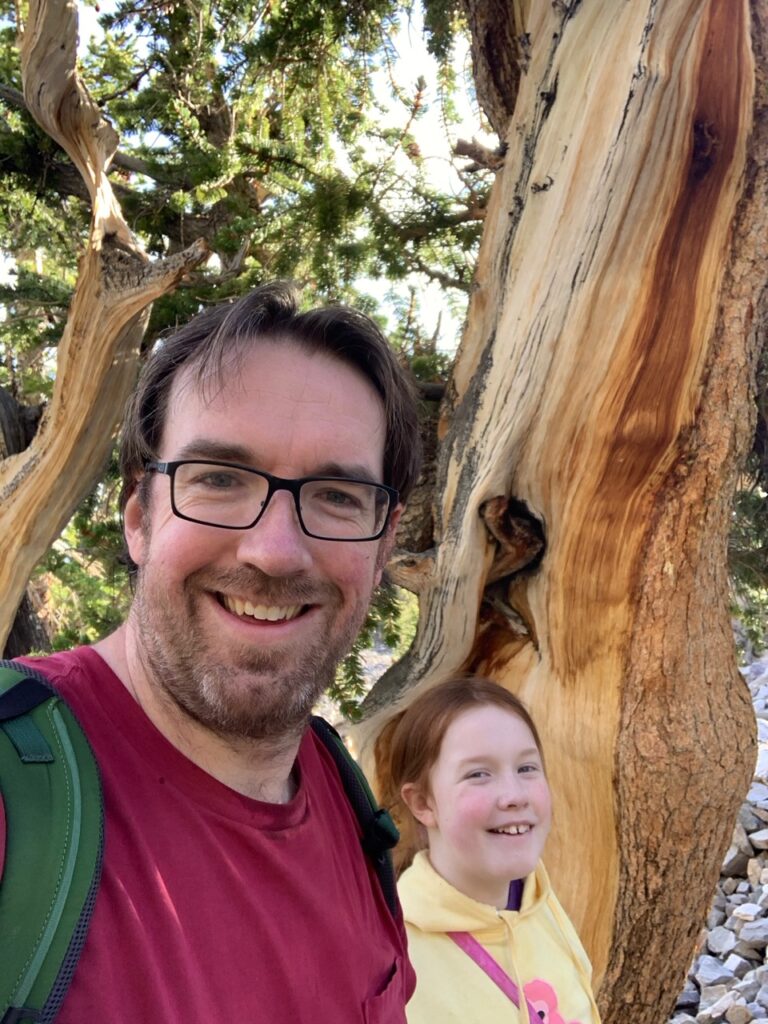
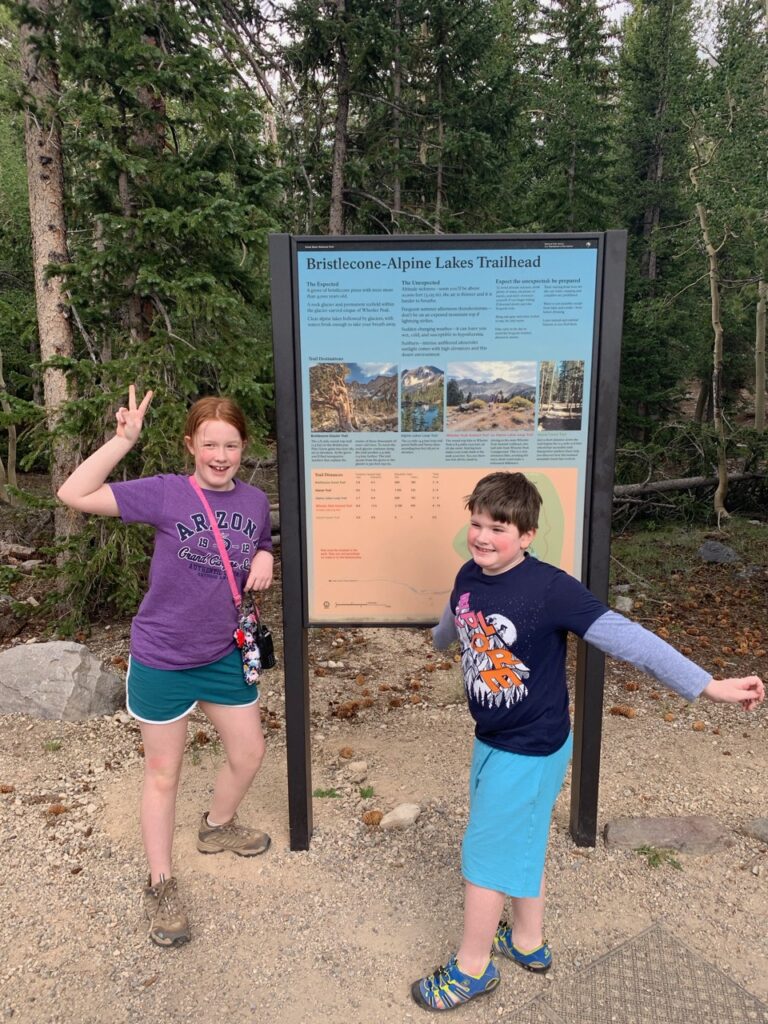
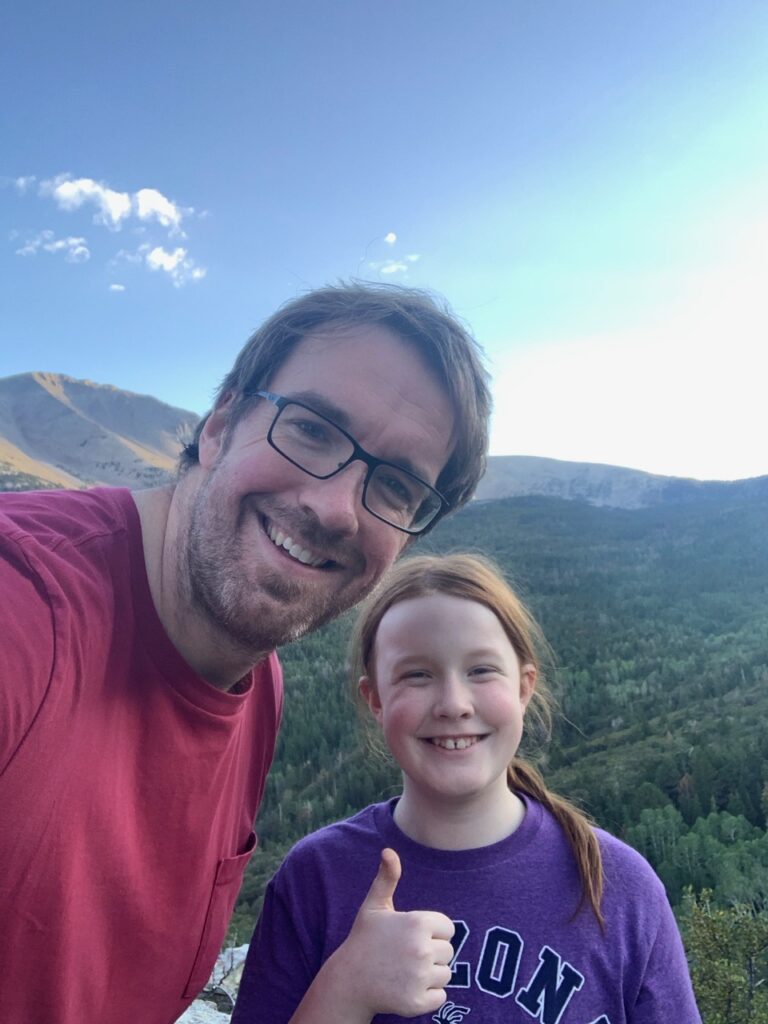
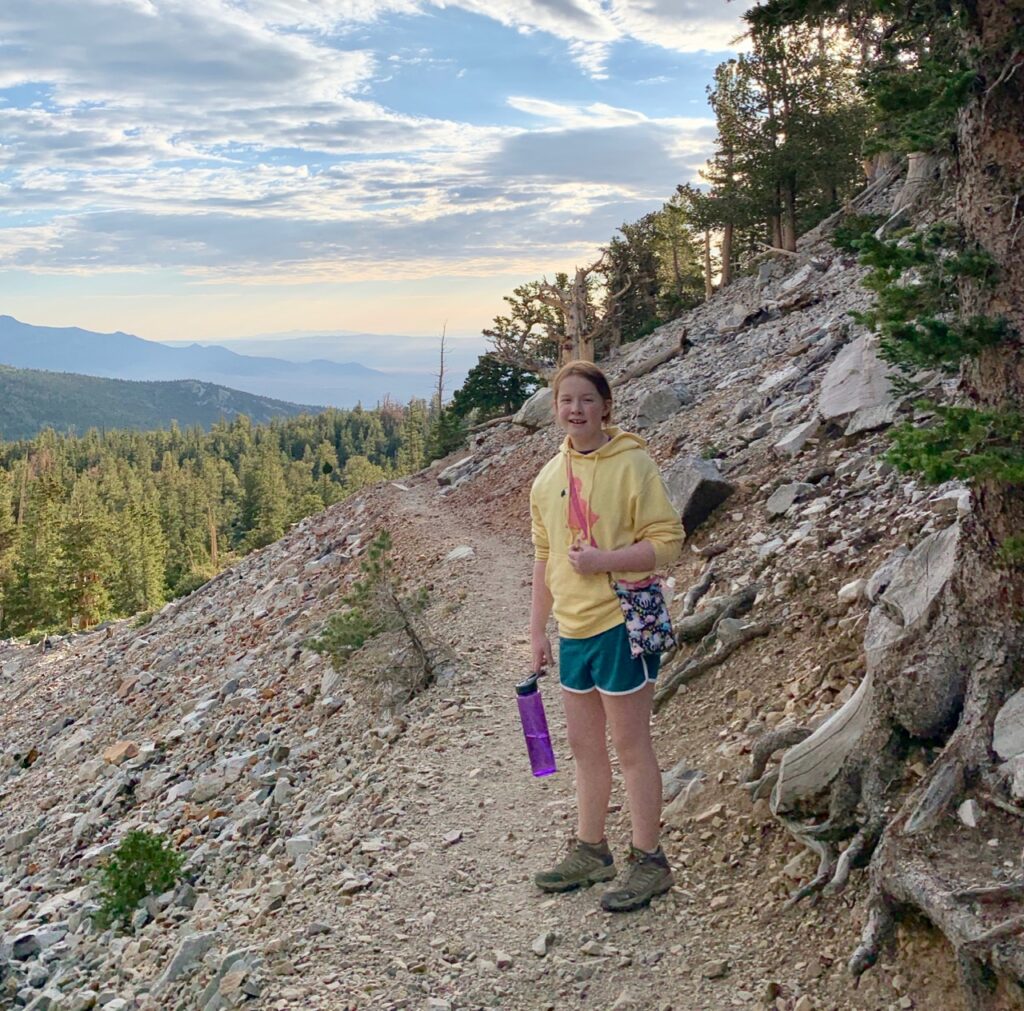
At the end of the Scenic Drive, a parking area gives access to popular trailheads, including a 3-mile loop leading to two alpine lakes. The highlight for me was the Bristlecone Pine Grove. Cami and I woke up well before dawn one morning to make the drive and start our hike at first light. The trail, primarily uphill for about a mile and a half, leads to a spectacular grove of Bristlecone Pine Trees, some nearly 5,000 years old, at an elevation of 11,500 feet. A looping trail around the grove offers informational signs about specific trees, enhancing our appreciation of these ancient natural wonders. Nearby, a small alpine glacier covers about 2 acres, its depth shrouded in mystery.
Though we only spent two days in the park, it felt as though we experienced most of its renowned sites. We plan to return one day when the caves are open, and perhaps, we’ll even attempt the Wheeler Peak hike.




